One of the most sought after muscles that powerlifters look for in the squat and deadlift is the glutes. While I personally feel that this is a muscle that is overemphasized (but not worthless) in the raw squat, they do significantly contribute in the powerlifts, especially the deadlift. Quite often though, I’ll see trainees without the ability to create full glute activation and harness the full potential of the hip musculature in their big 3 due to them bleeding power at adjacent “hinge points” and positional inhibition errors.
A Quick Note
Like with most matters in exercise and sport training, there are a TON of factors that can cause a particular outcome. We are going to look at the glute activation problem through a bio-mechanistic model as that’s where I find most of the lifters I work with fall short. That’s not to say that neuropathies, tears, unilateral hip instabilities, and other factors aren’t contributors, I’ve just found them to be less common with the populations I work with.
Glute Function
Let’s cover some quick high level biomechanics here. In simple terms, the primary function of the glutes in the squat and deadlift is to extend, abduct, and externally rotate the hip. This results in your hips straightening and knees tracking over the toes.
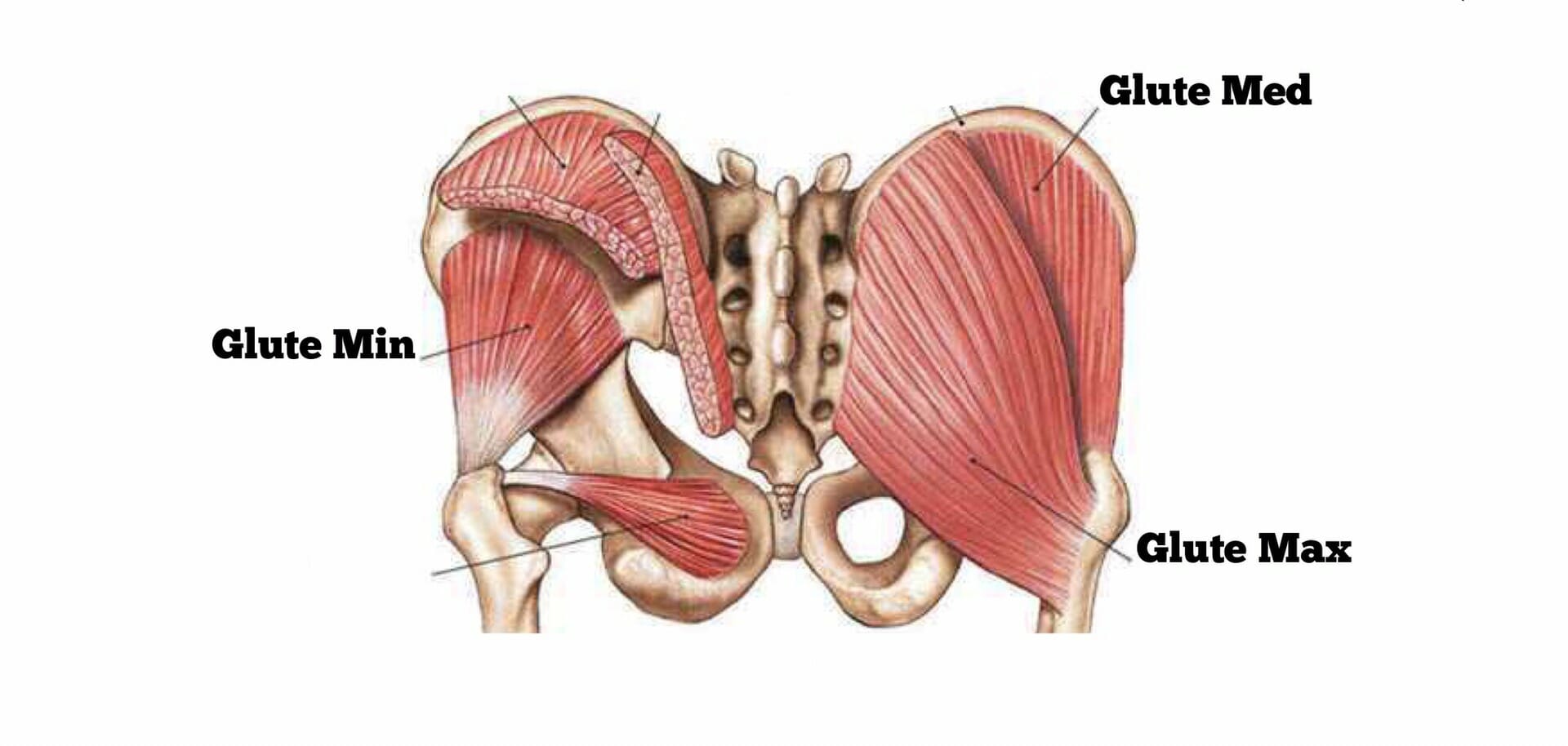
Hinge Points
Whenever I have a client asking me why they don’t feel their glutes, I’ll quite often take a look at adjacent joints. While the glutes act on the hips, low back, and femurs, if there is a lack of stability at the knees or low back , the hip will often require less movement and muscular force in order to complete a multi-joint movement such as a squat or deadlift. The graph below shows some arbitrary values for hip, knee, and low back loads in various squat forms.

“neutral”
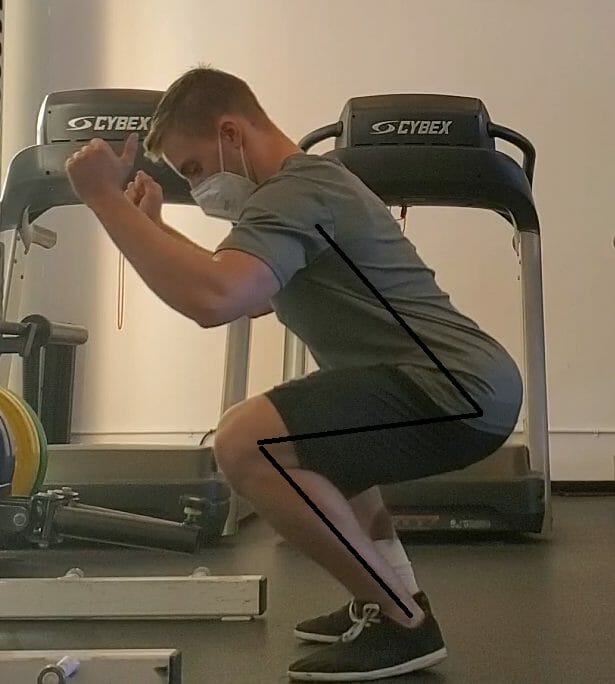
Lots of knee bend
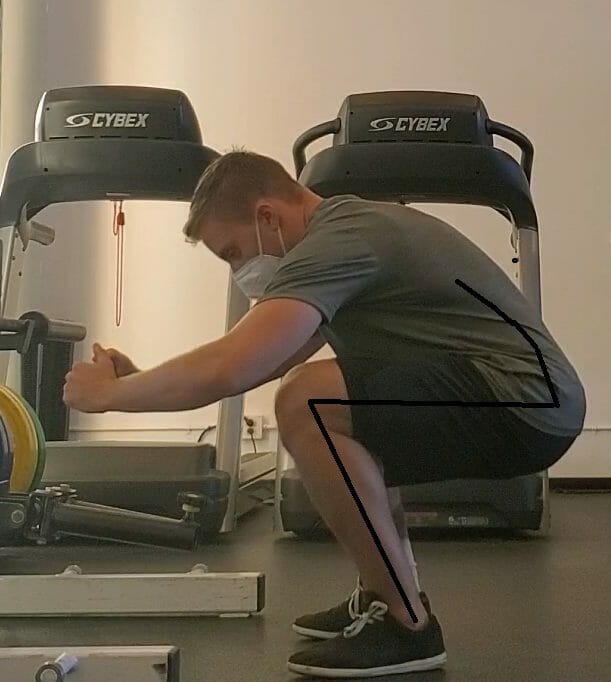
Round back
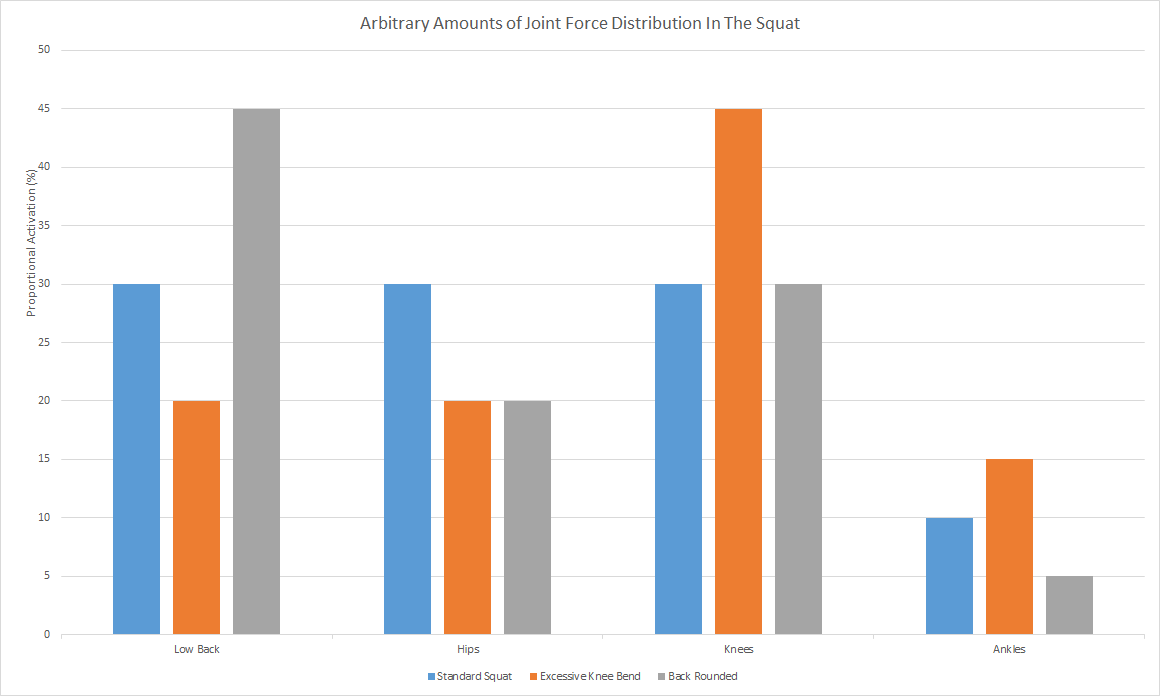
Without adequate lumbar stability and hip mobility, the hips will stop flexing in the descent of a squat or set up for a deadlift. As a result, the lumbar spine will create the extra movement (an additional “hinge point”) to get the total range of motion. This is commonly referred to as “butt wink” in the squat. If we can create better stability in the trunk, the dynamic portion of the movement remains focused on the hip and knee joints while allow the glutes, quads, and hamstrings to work more effectively as prime movers.

Positional Inhibition (PI)
The second place I see lifters “miss” on glute activation potential builds on the previous point: positional inhibition. This differs slightly from hinge points in the sense that the knee, hip, and low back all move equitably through the range of motion, but the position of the hip joint makes it more challenging to properly recruit the glutes.
PI is based around the concept that muscles are strongest at the mid point of their ranges of motion. As they muscle becomes contracted or lengthened closer to its full range or motion, the potential for peak force production drops off. This is especially true in the lengthened position.
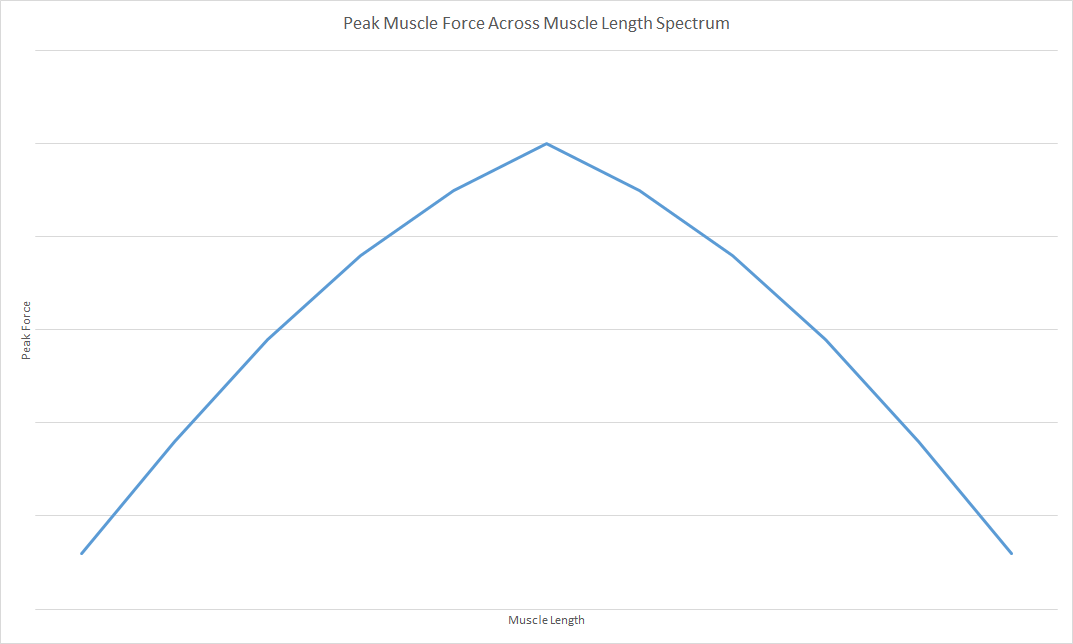
When the pelvis is placed into an excessively anteriorly or posteriorly tilted position (arched or rounded back, respectively), the glutes are placed into a compromised starting position. As you go through the movement of a squat or deadlift, this already weakened position becomes even weaker as you lengthen the muscle to descend. This can result in the athlete having a harder time feeling the glutes.
We can use PI to our advantage by changing joint positions to place the muscles into more advantageous, “neutral” positions which both improves mind-muscle connection as well as the peak force output of the muscles.
Of course, there are a number of ways to improve glute activation in the powerlifts, but without addressing these fundamentals, no amount of bodyweight glute bridges, single leg deadlifts, or hip circle lateral walks will get you fully integrating the glutes into your squat and deadlift movements.
PS – Here’s 3 ways I can help you get stronger:
3. Apply to join my “Momentum Program” and become a case study. We’ll work with you 1-on-1 (in-person or online, depending on location) to consistently increase your PRs.
It takes less than 60 seconds to apply HERE in order to find out more information and see if you’d be a good fit.